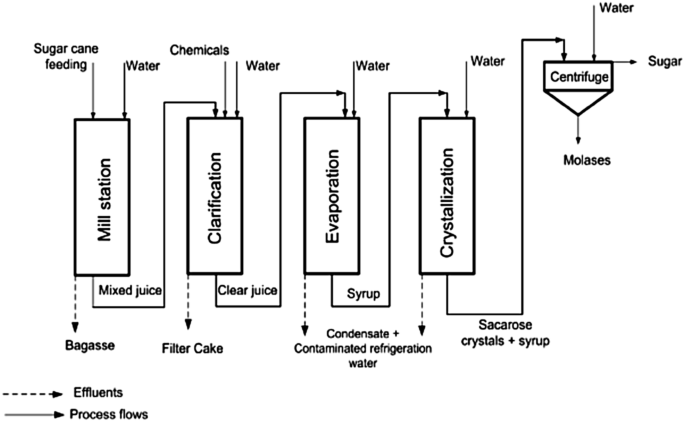Maximizar Rendimientos Y Minimizar Costos: Estrategias Avanzadas Para La Optimización Química Del Procesamiento De Azúcar De Caña
In the realm of walking cane sugar handling, the pursuit of taking full advantage of yields while concurrently decreasing expenses stands as an awesome challenge that needs a tactical mix of sophisticated chemical optimization methods. The ins and outs of this endeavor dive into the core of performance, where every component of the procedure plays an important duty in attaining optimal results. By checking out the details of chemical evaluation, enzyme application, pH control, purification, and distillation approaches, a landscape rich with possibilities for improvement and development arises. Among this complex internet of strategies exists the guarantee of unlocking untapped capacity and changing the very essence of sugar production. Cane Sugar Processing Chemicals.
Chemical Analysis for Efficiency
Chemical evaluation plays a pivotal function in enhancing the effectiveness of sugar walking stick processing by offering critical insights right into the make-up and buildings of the raw materials. By conducting comprehensive chemical analyses on sugar walking cane examples, cpus can establish the specific concentrations of sucrose, glucose, fructose, and other elements present in the raw material. This details is important for optimizing the various phases of the sugar walking cane handling chain, from crushing to condensation.
Furthermore, chemical analysis allows processors to identify impurities such as organic acids, healthy proteins, and minerals that can influence the quality and yield of the final sugar product. By evaluating these impurities, processors can implement targeted methods to eliminate or reduce their effects, ultimately boosting the overall effectiveness of the handling plant.
In addition, chemical evaluation facilitates the surveillance of procedure criteria such as pH, temperature level, and viscosity, enabling processors to make real-time adjustments to guarantee ideal problems for sugar extraction and formation. Overall, an extensive understanding of the chemical make-up of sugar walking cane is necessary for making best use of yields, lessening prices, and maintaining high item high quality in the sugar manufacturing sector.

Enzyme Application for Increased Returns
With a strategic approach to enzyme use, sugar walking cane cpus can significantly enhance their yields while preserving functional performance in the production process. Enzymes play an essential function in sugar walking stick handling by damaging down intricate carbs right into easier sugars, hence enhancing the overall sugar extraction effectiveness. By including certain enzymes tailored to target the various parts of sugar walking stick, such as cellulose and hemicellulose, cpus can improve the release of sugars during removal.
Enzyme application uses the advantage of optimizing sugar returns from the raw material while reducing the energy and resources required for handling. Via careful choice and application of enzymes, sugar cane cpus can enhance their procedures to accomplish greater returns and productivity.
Ph Control for Optimum Processing
Enzyme utilization for boosted returns in sugar walking stick handling lays the foundation for attending to the essential aspect of pH control for ideal handling effectiveness. Keeping the proper pH level throughout various stages of sugar cane handling is essential for making the most of returns and reducing prices. pH control is especially crucial during the removal and explanation procedures. In the extraction stage, maintaining the right pH aids in accomplishing reliable sucrose removal from the walking stick. Controlling the pH throughout explanation help in the precipitation of impurities and non-sucrose parts, leading to a purer final item. PH influences the task of enzymes involved in the malfunction of macromolecules, influencing the general performance of the process. By meticulously keeping an eye on and adjusting the pH levels at different processing actions, sugar cane processors can boost sugar recovery rates, lower chemical usage, and enhance the total manufacturing procedure. Reliable pH control not just improves the high quality of the end product however additionally contributes to sustainable and economical sugar cane handling procedures.
Advanced Purification Strategies
Applying innovative purification methods in sugar walking stick handling improves the efficiency and purity of the final item via improved splitting up techniques. By including sophisticated purification modern technologies, such as membrane layer filtering and activated carbon filtration, sugar walking cane handling plants can accomplish higher degrees of sugar healing and enhanced quality assurance.

Activated carbon filtration is an additional innovative strategy that helps in the removal of colorants, off-flavors, and recurring contaminations from sugar walking stick products. By making use of turned on carbon's adsorption properties, this purification technique boosts the clearness and taste of the sugar, meeting the high standards required by consumers and industry laws.
Energy-Efficient Distillation Techniques
Energy-efficient distillation approaches are vital for optimizing the sugar walking cane handling industry's power usage while maintaining high-grade product criteria. Traditional purification procedures can be energy-intensive, resulting in greater production expenses visit this site right here and ecological impacts (Cane Sugar Processing Chemicals). Carrying out energy-efficient purification methods, such as vacuum cleaner distillation or molecular distillation, can dramatically decrease power needs while improving general procedure performance
Vacuum distillation includes decreasing the pressure within the distillation system, which reduces the boiling factor of the fluid blend being refined. This reduction in boiling point lowers the power needed for vaporization, leading to power cost savings contrasted to conventional distillation methods.
On the other hand, molecular purification uses brief course distillation strategies under high vacuum conditions to different substances based on their molecular weight. This technique is especially efficient for heat-sensitive materials, as it runs at reduced temperatures, decreasing energy usage and preserving product high quality.
Final Thought
